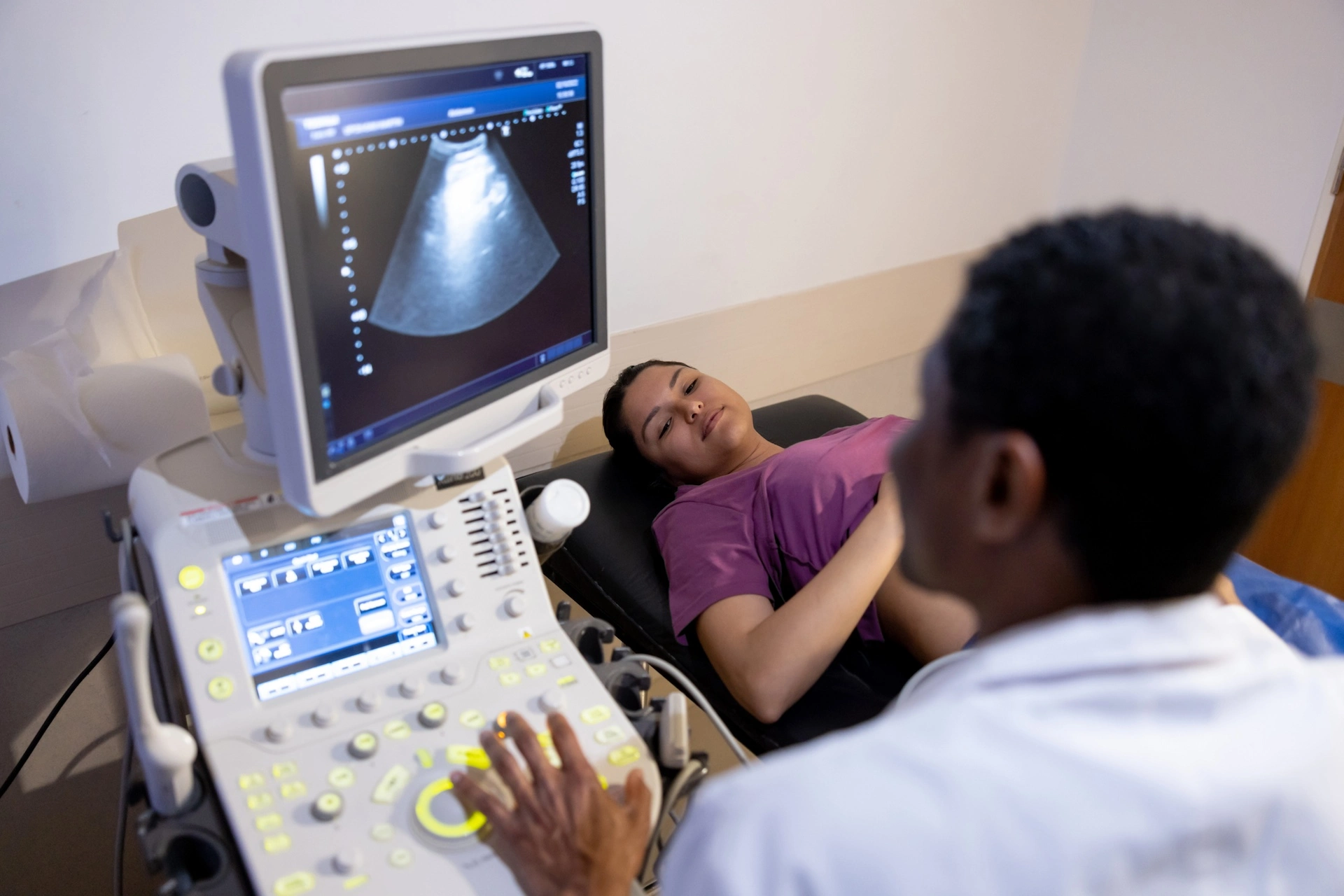Kaiser Permanente researchers found prenatal care telehealth use nearly doubled during the pandemic
Pregnant patients who received some of their prenatal care during the COVID-19 pandemic in a combination of virtual and in-office visits — known as multimodal prenatal care — had similar health outcomes as those who were seen mostly in person before the pandemic, according to a large new study of more than 150,000 births from the Kaiser Permanente Division of Research.

The study also found no significant differences in the uptake of telehealth prenatal care and how it affected people from varying racial and ethnic groups or socioeconomic backgrounds, and those using a language other than English or living in a rural area. These findings address concerns that people who may have less access to technology for video care might have poorer health outcomes.
The results suggest that remote care could have an ongoing role in replacing some prenatal in-person visits, increasing convenience for those who want to be seen at home, without harming disadvantaged people, said lead author Assiamira Ferrara, MD, PhD, a senior research scientist with the Division of Research.
“Integrating the use of telemedicine in prenatal health care provides an alternative to exclusive in-office care for people living in underserved areas or facing access barriers,” Ferrara said. “Also, the latest guidelines for prenatal care suggest it is not necessary to be seen in person for every prenatal visit, and some care can be delivered effectively remotely.”
The COVID-19 pandemic period, with its reliance on virtual care, provided an opportunity for a natural experiment in shifting some prenatal care to phone and video. Recommended prenatal care in Kaiser Permanente Northern California includes 8 to 10 visits from 6 weeks gestation to delivery.
The analysis compared pregnancy care, delivery, and outcomes for 3 different time periods: delivery before the pandemic (July 2018 to February 2020), early pandemic (March 2020 to December 2020), and mid-pandemic (December 2020 to October 2021). It included 151,464 people who delivered a live birth or stillbirth.
The percentage of telemedicine visits for each patient jumped from 11% to 21% from the pre-pandemic period to the pandemic period. But the average number of prenatal visits per patient did not change significantly: it was 9.4 pre-pandemic and 9.15 in the pandemic period.
The specifics of prenatal care also did not change across the pandemic: blood pressure readings, gestational diabetes screenings, and depression screenings remained steady.
Birth outcomes also did not change significantly with the rise in telehealth during the pandemic. Admissions to the neonatal intensive care unit (NICU) were 9.2% before the pandemic and 8.6% during. The investigators did note a small increasing trend in newborn NICU admissions during the second half of the pandemic period, which they said would need further investigation.

Rates of preeclampsia (a dangerous high-blood pressure condition in pregnancy), severe maternal morbidity, cesarean delivery, and preterm birth did not change significantly among studied time periods.
Support for ‘multimodal’ model
The results support the safety of a shift to more multimodal prenatal care, a change that was being contemplated even before the pandemic prompted more remote visits, said co-author Mara Greenberg, MD, a maternal-fetal medicine specialist who co-directs the Kaiser Permanente Regional Perinatal Service Center. “As telehealth becomes a more widespread intervention in all areas of medicine, including prenatal care, there is great interest nationwide in understanding more about outcomes and patient preferences associated with a more varied way patients can receive that care,” Greenberg said. “This study provides exciting data supporting continued use of a multimodal care model, and further study of the best way to interweave remote visits and in-person visits during pregnancy.”
The study used advanced analytical methods including a sophisticated version of interrupted time series analysis. Co-author and Division of Research investigator Charles Quesenberry, PhD, led the rigorous study design used in evaluating the effect of natural experiments that allowed for comparison of pregnancy care and outcomes over the course of a pregnancy and in 3 different time periods before and during the pandemic. “A strength of the study was its ability to assess the uptake and effectiveness of the multimodal prenatal health care delivery by several sociodemographic factors,” Quesenberry said.
 The analysis looked at outcomes for subgroups including people of different races and ethnicities, those living in economically disadvantaged neighborhoods or rural areas, and those speaking languages other than English. “We did not observe differences in the uptake of telemedicine by sociodemographic characteristics,” Ferrara said.
The analysis looked at outcomes for subgroups including people of different races and ethnicities, those living in economically disadvantaged neighborhoods or rural areas, and those speaking languages other than English. “We did not observe differences in the uptake of telemedicine by sociodemographic characteristics,” Ferrara said.
The study was funded by The Permanente Medical Group.
Additional co-authors were Yeyi Zhu, PhD, Lyndsay Avalos, PhD, Amanda Ngo, MS, Jun Shan, PhD, and Monique Hedderson, PhD, all of the Division of Research.
# # #
About the Kaiser Permanente Division of Research
The Kaiser Permanente Division of Research conducts, publishes and disseminates epidemiologic and health services research to improve the health and medical care of Kaiser Permanente members and society at large. It seeks to understand the determinants of illness and well-being, and to improve the quality and cost-effectiveness of health care. Currently, DOR’s 600-plus staff is working on more than 450 epidemiological and health services research projects. For more information, visit divisionofresearch.kaiserpermanente.org or follow us @KPDOR.





This Post Has 0 Comments